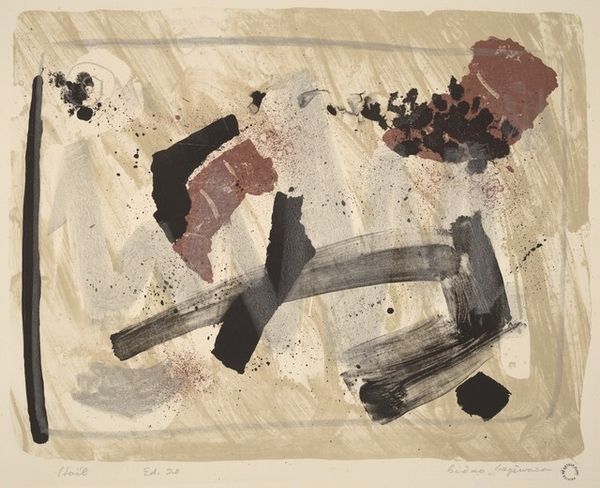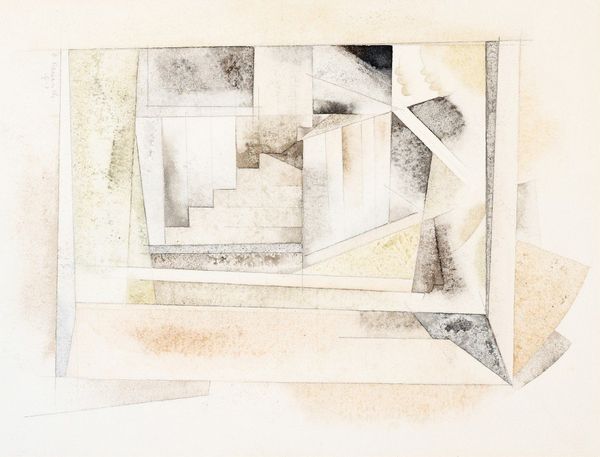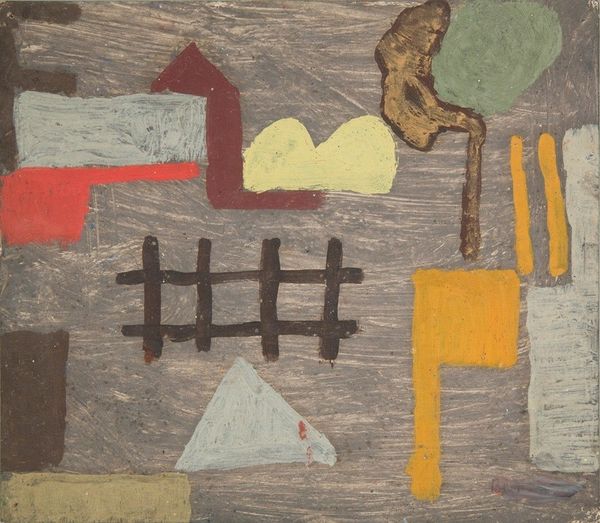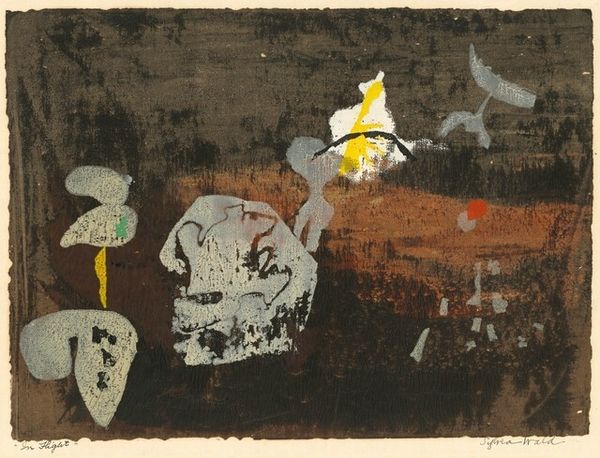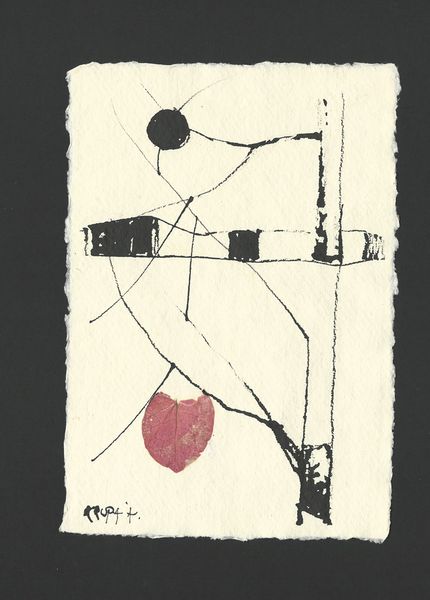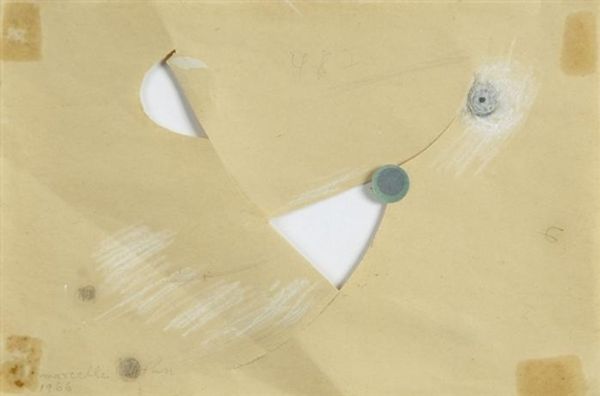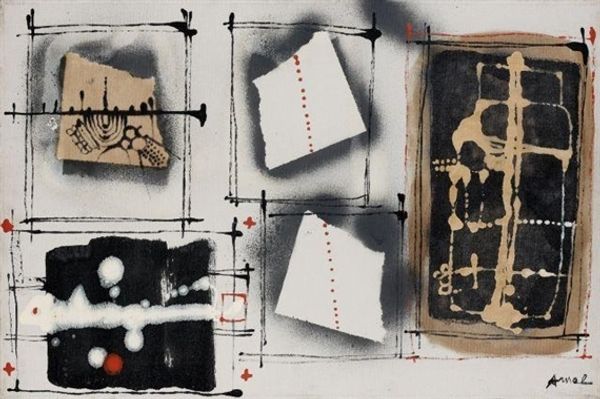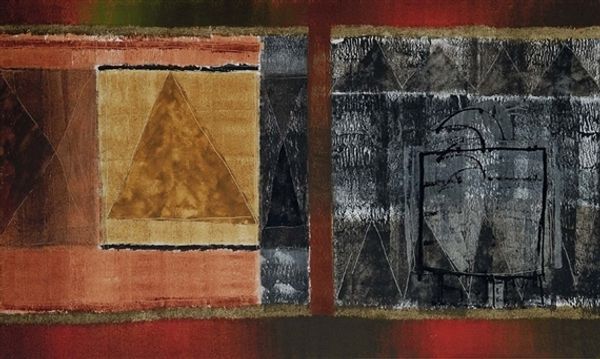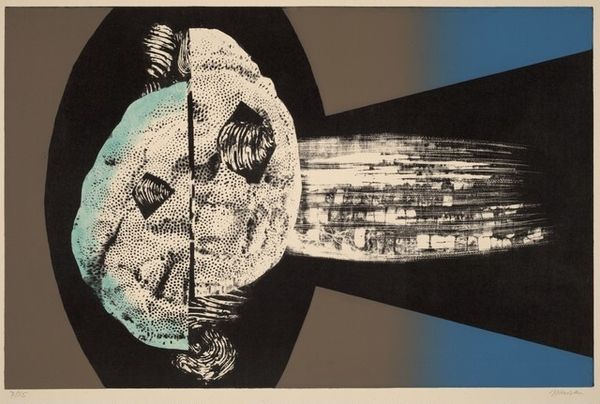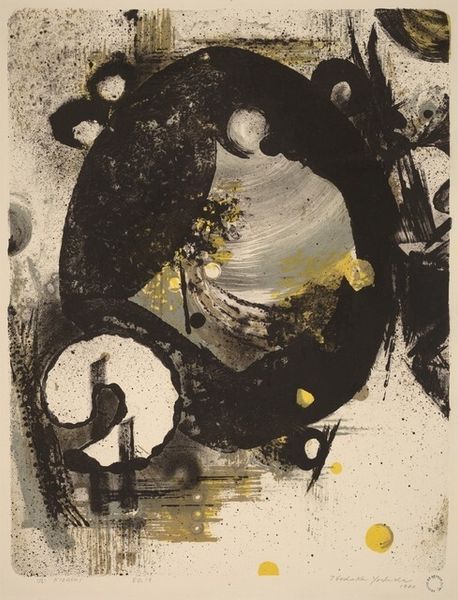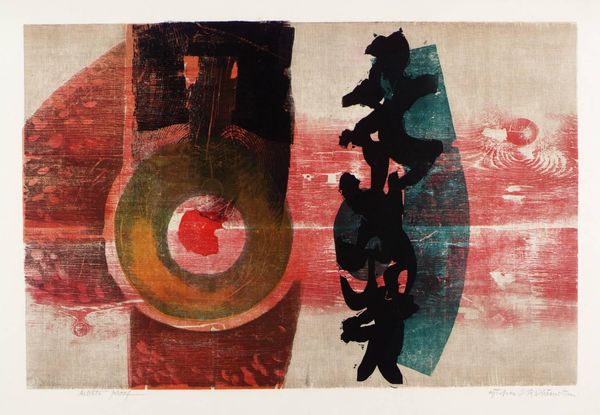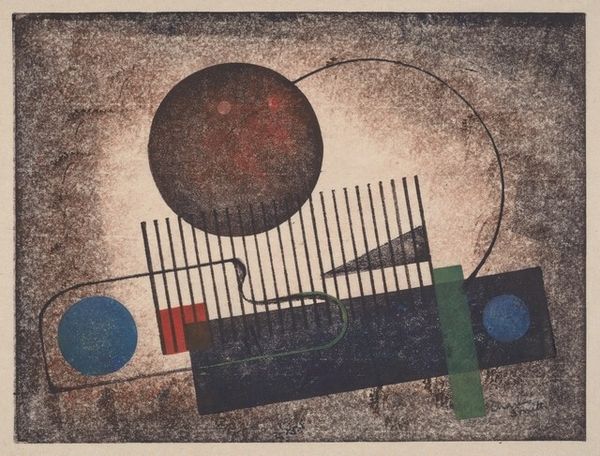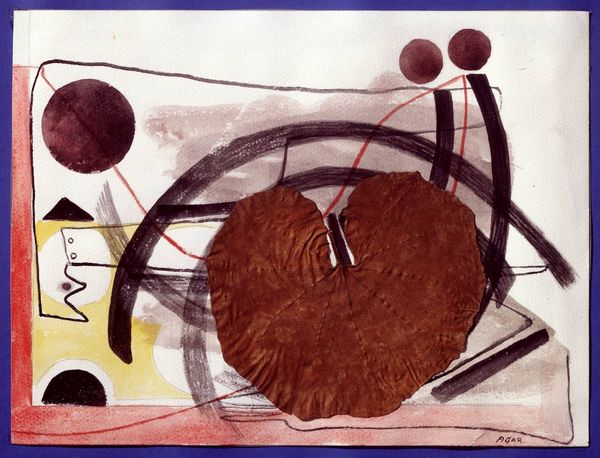
graphic-art, coloured-pencil, print
#
graphic-art
#
art-nouveau
#
coloured-pencil
# print
#
form
#
coloured pencil
#
geometric
#
abstraction
#
line
Copyright: National Gallery of Art: CC0 1.0
Editor: This graphic art piece, titled "Man of Jomon Age" by Shoe Enokido, uses coloured pencil and printmaking techniques. The geometric shapes floating in the dark space create a kind of abstracted face, and I am wondering about the relation between abstraction and representation in this work. What are your thoughts? Curator: The title immediately invites us to consider its socio-historical context. The Jomon period in Japan represents a significant era marked by unique cultural practices, like pottery with cord-marked patterns. Considering this piece, how do the geometric shapes, perhaps referencing Jomon pottery or dwelling structures, evoke or deconstruct ideas around primitivism? Editor: I see what you mean, the "face" almost becomes an architectural rendering or a map. So, is Enokido exploring how we project our understanding, or perhaps misunderstanding, of ancient cultures onto abstract forms? Curator: Exactly! And we should also acknowledge that it was created within a specific socio-political time. What could abstraction have meant to an artist like Enokido, thinking about identity in a rapidly modernising Japan? Was it a way of reclaiming cultural narratives, or perhaps critiquing the construction of identity itself? Editor: It’s interesting to think of it as a statement about cultural identity. The abstraction almost resists easy interpretation, which perhaps challenges stereotypical depictions of Japanese history. Curator: Precisely! The artist encourages a re-evaluation. Thinking about the material of coloured pencil—how does such a humble tool further democratize our engagement with themes of national identity and historical representation? Editor: I never would have considered the implications of the medium, but it really adds another layer to the meaning of the artwork. Thanks! Curator: Absolutely, it’s by asking these kinds of questions that we open artworks to broader interpretation.
Comments
No comments
Be the first to comment and join the conversation on the ultimate creative platform.
